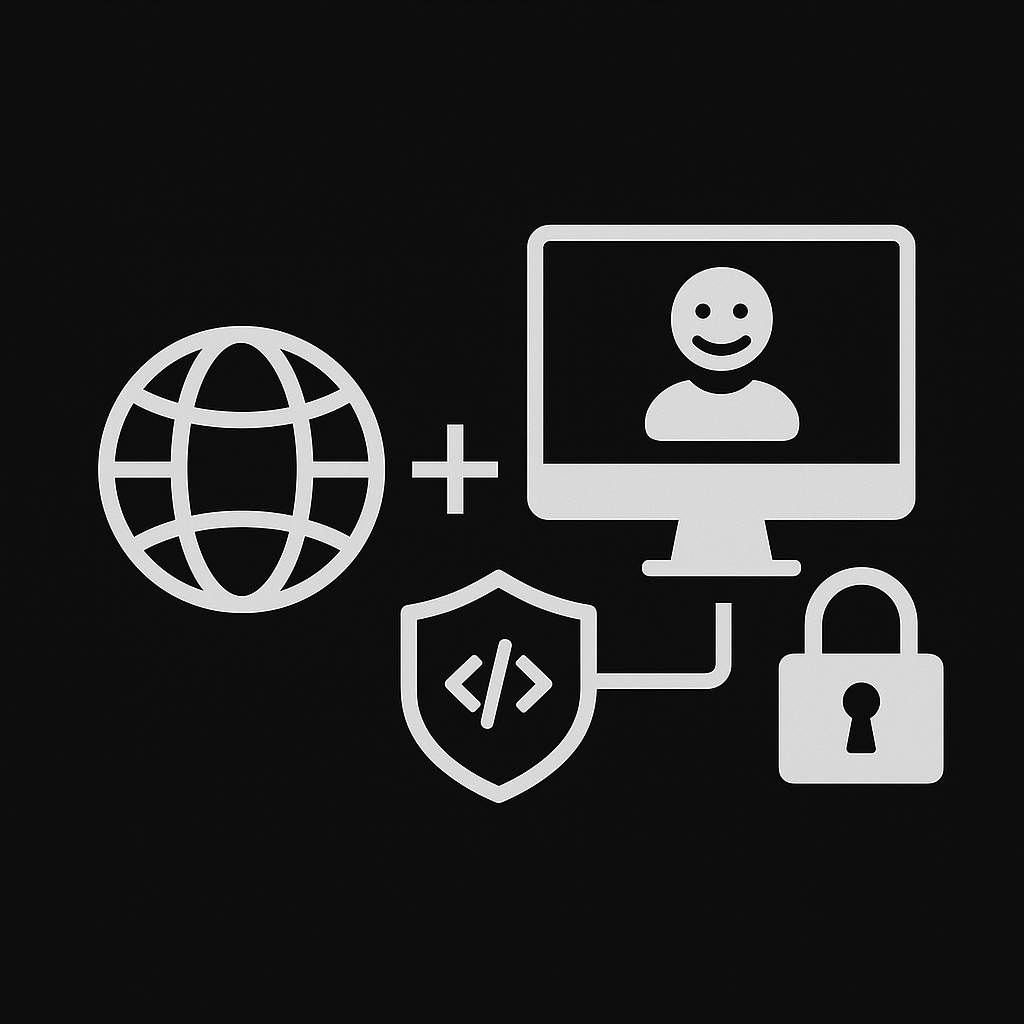Unveiling the Shadows: Why Red Teaming is the Ultimate Cybersecurity Gauntlet
Welcome, cybersecurity enthusiasts and curious minds! I’m delighted to guide you through the intricate and often misunderstood world of Red Teaming. If you’ve ever wondered how organizations truly test their defenses against sophisticated attackers, or what it takes to think like an adversary, you’re in the right place. This isn’t just about finding technical bugs; it’s about a comprehensive, no-holds-barred simulation that pushes the boundaries of conventional security testing.
For those venturing into this domain, a foundational understanding of networking, Linux, and Microsoft systems is absolutely essential. Think of these as your basic toolkit; without them, the more advanced concepts we’ll explore will be much harder to grasp. I always emphasize that practice is paramount. Whether it’s setting up an Active Directory, joining systems, or executing attacks, repeating tasks multiple times – perhaps 50 to 100 times – until they become second nature, is the only way to truly internalize the knowledge.
In this deep dive, inspired by the SANS 565 Red Team course, we’ll unravel the core concepts, methodologies, and the mindset required to excel in this challenging field. We’ll explore everything from initial reconnaissance to sophisticated Active Directory attacks, privilege escalation, lateral movement, data exfiltration, and even the critical role of reporting. We’ll specifically delve into powerful tools like Cobalt Strike for command and control (C2).
Let’s embark on this journey and illuminate the shadows where real attackers operate.
The Red Team’s Mission: A Real-World Attack Simulation
At its heart, a Red Team is a specialized group of cybersecurity professionals tasked with simulating a genuine, persistent, and highly skilled adversary. Imagine them as the “A-Team” of ethical hackers, bringing together a diverse array of talents:
- Programmers who can craft custom tools and malware.
- Malware specialists dedicated to bypassing defenses.
- Social engineers with a knack for manipulating human behavior.
- Network specialists who understand the intricate web of connections.
- Web application experts capable of exploiting online vulnerabilities.
- Even individuals proficient in physical security to gain access to restricted areas.
This diverse group, often comprising five to ten individuals, works cohesively to form a formidable simulated threat. Their ultimate objective is not merely to identify vulnerabilities but to evaluate an organization’s overall security posture by mimicking the tactics, techniques, and procedures (TTPs) of real-world attackers. They aim to uncover weaknesses in systems, infrastructure, networks, web applications, and, crucially, in human processes and the defensive capabilities of the blue team. The insights gained from these engagements are invaluable, providing a brutally honest assessment of an organization’s resilience against cyberattacks.
Red Team vs. Penetration Testing: A Game of Shadows
To truly appreciate the unique value of Red Teaming, it’s crucial to understand how it differs from traditional penetration testing (pentesting). While both aim to find security flaws, their approaches, scope, and objectives diverge significantly, much like a controlled sparring match versus a street fight.
The Announced vs. Unannounced Dynamic
In a typical pentest, the engagement is announced. The pentester communicates with the target organization’s Blue Team (the defenders), often providing their IP address and outlining the scope of their activities. The Blue Team is aware that a test is underway and can adjust their monitoring and response accordingly. This is akin to a pre-arranged drill where everyone knows the exercise is happening. For instance, a pentester might declare, “My IP is X.X.X.X; I’m testing your systems. Don’t worry if you see my logs, I’m just doing my job”.
Red Teaming, however, operates in the shadows. The most defining characteristic is that the Blue Team is typically unaware that an attack simulation is taking place. This creates a realistic scenario where defenders must detect and respond to threats as they would to a genuine, unannounced cyberattack. The goal is to identify how effectively the Blue Team can detect, respond to, and recover from an attack under real-world pressure. This “surprise attack” element is what makes Red Teaming so potent for evaluating actual defensive capabilities.
Scope and Tactics: A World of Difference
Another key differentiator lies in the scope of the engagement. In pentesting, the scope is often limited and predefined. An organization might tell a pentester, “We have 2,000 servers, but you are only authorized to test these 500 specific assets”. This narrow focus allows for deep dives into specific systems but might miss broader vulnerabilities or attack paths that span across different organizational assets.
Red Teaming takes a much broader, open-ended approach. The mandate often is: “Here’s our company name – good luck!”. This means Red Teams are free to employ any tactic a real attacker might use, from initial reconnaissance (gathering public information like IP ranges, DNS records, email addresses, and website details) to sophisticated multi-stage attacks. They aren’t restricted to technical exploits; they often incorporate social engineering and phishing attacks, which are typically out of scope for traditional pentests.
For example, a Red Team might start by crafting a malicious file embedded in an email, sending it to an employee (perhaps even an administrator), and if the employee clicks, gaining initial access and administrator privileges. This highlights a crucial distinction: while pentesting focuses on identifying known vulnerabilities in defined systems, Red Teaming aims to test the entire organizational ecosystem, including its people and processes, against sophisticated, adaptive adversaries. The objective is not just to find vulnerabilities, but to assess the organization’s overall resilience against a determined attacker who operates without prior notification or predefined boundaries.
The Imperative for Red Teaming: Why We Need Aggressive Simulation
Why go to such lengths with Red Teaming? Why not simply stick to penetration testing? The answer lies in challenging complacency and revealing critical blind spots that traditional security measures often miss.
Challenging the “We’re Secure” Mindset
Many organizations, despite significant investments in security infrastructure and skilled teams, can fall into the trap of thinking, “My system is always secure,” or “My application is excellent,” or “Our company is highly resistant to attacks”. This belief, while understandable, can create a false sense of security. Red Teaming directly confronts this mindset. It says, “Okay, you believe you’re secure? We’ll try to get in”.
By attempting to bypass existing defenses, Red Teams expose not only technical vulnerabilities but also weaknesses in security awareness among employees and monitoring capabilities of the Security Operations Center (SOC). They might find that employees download unauthorized files, that the SOC misses certain types of attack logs, or that the security team lacks visibility into specific internal processes. For instance, a Red Team once deployed a reverse shell that executed commands without generating any logs or alerts on the Blue Team’s SOC. These are the kinds of profound insights that only a realistic, unannounced attack simulation can provide.
The Symbiotic Relationship: Strengthening the Blue Team
Perhaps the most crucial, yet often misunderstood, aspect of Red Teaming is its role in strengthening the Blue Team. There’s a common misconception that Red Team and Blue Team are separate, even adversarial entities. However, this couldn’t be further from the truth. All security units, including the Red Team, ultimately serve to enhance the overall defensive posture of an organization, directly supporting the Blue Team.
Think of it this way: would you want your bank’s information to be stolen, including your name, address, phone number, account balance, and card details? Of course not. The Red Team helps prevent this by challenging and improving the Blue Team’s ability to defend against real threats.
A Red Team engagement often involves conducting multiple attacks—perhaps 15-20 on Active Directory, other systems, the network, or web applications. Afterward, the Red Team might present their findings to the Blue Team, asking, “We performed 15 attacks; how many did you detect?”. If the Blue Team identified only 13, the Red Team can then collaboratively analyze the two missed attacks, leading to the creation of new detection rules (e.g., in Splunk) or improved logging mechanisms. This continuous feedback loop, where Red Team identifies gaps and Blue Team improves detection, is vital for hardening an organization’s defenses against evolving threats.
The Art of Attack: Methodology and Tools of the Trade
Executing a Red Team operation is a highly structured and sophisticated endeavor. It follows well-defined methodologies and leverages a specialized arsenal of tools, many of which are custom-built.
Navigating the Attack Lifecycle: Kill Chain & MITRE ATT&CK
Two prominent frameworks guide Red Team operations: the Cyber Kill Chain and MITRE ATT&CK. Both essentially map out the stages an adversary follows during an attack, but they offer different levels of granularity.
- The Cyber Kill Chain (Lockheed Martin): This model simplifies the attack process into seven sequential stages:
- Reconnaissance: Gathering information about the target.
- Weaponization: Creating an exploit and packaging it into a deliverable payload (e.g., a malicious Word document).
- Delivery: Transmitting the weaponized payload to the target (e.g., via email or USB stick).
- Exploitation: Triggering the vulnerability to run code on the target system.
- Installation: Establishing persistent access (e.g., installing a backdoor).
- Command & Control (C2): Establishing a communication channel with the compromised system to control it remotely.
- Actions on Objectives: Achieving the attacker’s ultimate goal, such as data exfiltration, destruction, or espionage.
- MITRE ATT&CK: This framework offers a much more detailed and extensive knowledge base of adversary tactics and techniques. It categorizes attacks into 14 tactics, each containing numerous specific techniques identified by a unique ID (e.g., T1595). These tactics span the entire attack lifecycle, including:
- Reconnaissance
- Resource Development
- Initial Access
- Execution
- Persistence
- Privilege Escalation
- Defense Evasion
- Credential Access
- Discovery
- Lateral Movement
- Collection
- Command and Control
- Exfiltration
- Impact
For each technique, MITRE ATT&CK provides descriptions, examples of groups that use it, detection methods, and mitigation strategies. This granular detail allows Red Teams to precisely mimic real-world threat actors and helps Blue Teams build more robust defenses. For instance, “Spearphishing Attachment” might have an ID like T1566.001, detailing how it’s used.
The Red Teamer’s Arsenal: Crafting and Customizing Tools
A Red Teamer’s success often hinges on their ability to avoid detection. This is why writing custom tools is paramount. Using off-the-shelf tools or outdated exploits (e.g., a 10-year-old Python script) might work for a basic pentest, but for a high-level Red Team engagement, such tools are likely to be detected by modern security solutions. A custom C-code reverse shell, for example, might easily bypass even the latest Windows Defender updates.
This emphasis on custom tooling extends to Command and Control (C2) frameworks. While powerful tools like Cobalt Strike are popular, experienced Red Teams often modify or even create their own C2 agents to minimize their footprint and evade detection.
The development process involves rigorous testing:
- Dedicated Test Environment: Always perform initial tests in an isolated virtual machine (VM) environment. Run your tools and techniques dozens of times until you thoroughly understand their behavior.
- Code Modification: When using existing exploits or tools (like Metasploit, Mimikatz, or PowerShell scripts), understand their underlying code. Then, modify parts of the code or use them as inspiration to write your own custom versions. This approach allows you to achieve the desired outcome while potentially avoiding detection or generating unique, unrecognized logs on the Blue Team’s side. The goal is to ensure your actions remain stealthy and don’t trigger alerts, giving the Blue Team a genuine challenge.
Beyond custom scripts, a Red Teamer’s arsenal includes a range of well-known tools tailored for each stage of the attack lifecycle:
- Reconnaissance: Shodan (for searching internet-connected devices), Recon-ng, Maltego, Nmap (for network scanning).
- Weaponization: Metasploit (for developing and executing exploits), Cobalt Strike.
- Delivery: Social-Engineer Toolkit (SET), custom phishing frameworks, Metasploit.
- Exploitation: Metasploit, Impacket (for network protocol exploitation), Nessus (for vulnerability scanning), Burp Suite (for web application testing).
- Installation/Persistence: Tools like Netcat for establishing basic backdoors.
- Command & Control: Cobalt Strike (a prominent commercial C2 framework), Metasploit.
- Actions on Objectives: Mimikatz (for credential dumping), Remote Access Trojans (RATs), and Wireshark (for network traffic analysis post-compromise).
Beyond the Hype: Practical Red Teaming in Action
Let’s illustrate the power of these methodologies and tools with a practical example from the reconnaissance phase using Shodan.
Imagine you’re targeting a company and need to gather initial information. You can use Shodan, often referred to as “the search engine for the internet of things,” to discover internet-facing devices belonging to your target. By simply searching for the company name (e.g., “X” – a local ISP in X country), Shodan can reveal their IP ranges, the types of devices they operate (like MikroTik routers), and even the versions of software running on those devices.
This is where the magic begins. If Shodan reveals a MikroTik router running, say, version 6.47, a quick search for vulnerabilities associated with that version might reveal a known exploit. Suddenly, you have a potential entry point to gain access to their network.
Expanding this, Shodan can also uncover specific software versions like vCenter servers and flag them if they are susceptible to known CVEs (Common Vulnerabilities and Exposures). For example, if Shodan shows a vCenter server vulnerable to a critical CVE (rated 9.8 out of 10), this is an immediate high-priority target. Without even attempting a direct attack, Shodan gives you the login page URL, open ports (like SSH, HTTP/S, RDP, LDAP), and the specific vulnerabilities affecting the system.
From here, a Red Teamer might employ tools like Hydra to brute-force usernames and passwords against the login page. Once inside, the process continues:
- Privilege Escalation: If initial access is with a low-privileged user, the next step is to elevate privileges to administrator or system level.
- Lateral Movement: Once an initial foothold is established, the Red Team moves laterally through the network to gain access to other critical systems or data.
- Data Exfiltration: The ultimate goal is often to extract sensitive data, demonstrating that a real breach could occur.
This entire process, from initial reconnaissance to potential data exfiltration, highlights how a Red Team systematically identifies and exploits weaknesses across an organization’s digital footprint.
Operational Considerations: Minimizing Impact
While Red Teams operate with an “anything goes” mindset to simulate real threats, there are practical considerations regarding operational interference. Organizations often have peak business hours (e.g., 8 AM to 4 PM) when even simulated disruptions could impact daily operations. Red Teams often negotiate specific times for high-impact activities (e.g., outside business hours or on weekends) or require explicit approval for actions that could be highly disruptive, such as deleting an Active Directory controller or messing with DNS records. This balance ensures that the test provides valuable insights without causing undue harm to the business.
Bridging the Divide: The Role of the Purple Team
The dynamic between Red and Blue Teams can sometimes be tense, with each side eager to prove its capabilities. This is where the Purple Team emerges as a crucial intermediary. The Purple Team acts as a bridge, facilitating cooperation and understanding between the offensive (Red) and defensive (Blue) sides.
A Purple Team typically performs some Red Team-like attacks while also engaging in Blue Team-like monitoring and defense. Their primary goal is to take the insights gained from Red Team engagements and directly translate them into improved defensive strategies for the Blue Team. If a Red Team manages to achieve access without being detected, the Purple Team can help analyze why the Blue Team missed it, and then work with the Blue Team to create new detection rules or improve existing ones.
For instance, after a Red Team action, the Purple Team might ask the Red Team, “Did your action generate any logs? Were you detected?”. Simultaneously, they’d ask the Blue Team, “How many of the Red Team’s actions did you detect?”. This collaborative approach ensures that the Red Team’s efforts directly enhance the Blue Team’s capabilities, transforming potential adversarial tension into a symbiotic relationship focused on continuous security improvement. The Purple Team ensures that the lessons learned from advanced attack simulations are effectively integrated into an organization’s defense mechanisms.
A Candid Look at Red Teaming Risks
Despite its immense benefits, Red Teaming is not without its risks. Engaging a Red Team means granting them a significant degree of freedom, which inherently carries certain responsibilities and potential hazards.
The most significant risk is the Red Team’s access to sensitive data. By design, Red Teams aim to reach critical systems and exfiltrate data to prove their success. This means they will inevitably come into contact with highly confidential information: personal data, financial records, intellectual property, and more. While contractual agreements are in place to manage this, organizations must acknowledge the inherent risk that sensitive data could potentially be accessed or even compromised by the Red Team itself, even if inadvertently.
There’s a revealing anecdote about a Red Team engagement where the team successfully exfiltrated highly sensitive data. Upon presenting their findings, the data on the Red Teamer’s laptop was so critical that the client insisted the laptop remain with them, offering to purchase a brand new identical one for the Red Teamer. This highlights the extreme value of the data Red Teams can access and the trust placed in them. Robust contractual agreements, clear scope definitions, and potentially restricting access to certain ultra-sensitive systems are crucial mitigation strategies.
Conclusion: The Ultimate Test of Resilience
Red Teaming is more than just a security exercise; it’s a profound, real-world stress test for an organization’s entire defense ecosystem. By embracing the mindset of a persistent, sophisticated adversary, Red Teams provide invaluable insights into an organization’s true security posture—from the robustness of its technology to the awareness of its employees and the efficacy of its security operations.
It’s a challenging field, demanding deep technical expertise, a strategic mind, and an unwavering commitment to continuous learning and practice. The journey through reconnaissance, exploitation, privilege escalation, and data exfiltration is complex, requiring mastery of various tools and the ability to craft custom solutions to evade detection.
Ultimately, the goal of Red Teaming is not to expose weaknesses for the sake of it, but to fortify defenses, educate Blue Teams, and foster a culture of proactive, adaptive security. In a landscape where cyber threats are constantly evolving, Red Teaming offers organizations the most realistic glimpse into their vulnerabilities, empowering them to build a more resilient and secure future.
If you’re ready to dive deeper into the world of offensive security, remember the foundations: network knowledge, Linux, and Microsoft mastery are your starting points. Embrace the practice, and you’ll be well on your way to understanding how to protect our digital world from the shadows that lurk within it.




